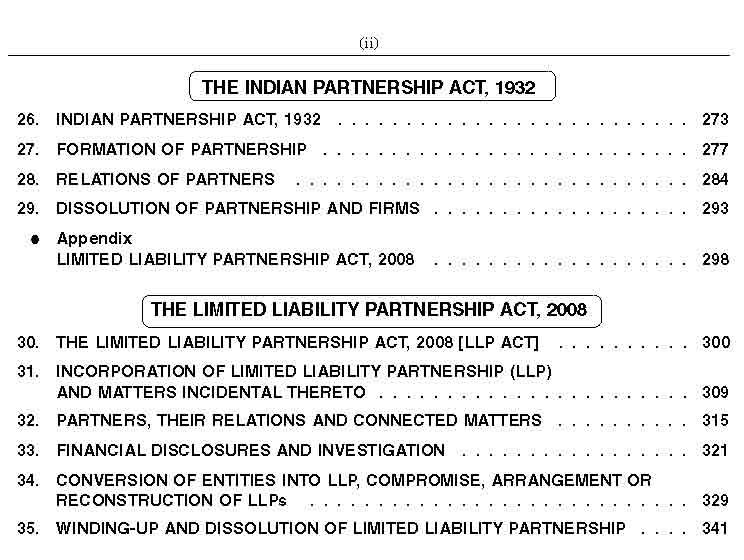
Overview of Roof Materials
The choice of roofing material is crucial for ensuring a durable and resilient structure, especially in regions prone to extreme weather conditions. The market offers a variety of roofing materials, each with distinct characteristics affecting their longevity and performance under environmental stressors. Understanding these materials helps homeowners make informed decisions tailored to their specific climate challenges.
Several roofing materials are widely available, each bringing unique properties that can withstand harsh weather conditions. The following list Artikels some of the most common roofing materials and their durability characteristics:
Types of Roofing Materials
The durability and performance of roofing materials vary significantly based on their composition and design. The materials listed below are evaluated for their performance in extreme weather conditions such as heavy rain, snow, hail, and high winds.
- Asphalt Shingles: This is one of the most popular roofing materials due to its affordability and ease of installation. While asphalt shingles can withstand moderate weather conditions, they may degrade in extreme heat or heavy snowfall. Their lifespan typically ranges from 15 to 30 years.
- Metal Roofing: Known for its impressive durability, metal roofing can last 40 to 70 years. It is highly resistant to wind, hail, and fire, making it ideal for regions with severe weather. However, metal roofs can be prone to rust if not properly treated.
- Clay and Concrete Tiles: These materials are highly durable and can last over 100 years. They excel in hot climates and can withstand heavy rainfalls and winds. Their weight, however, may require additional structural support.
- Slate Roofing: This natural stone material is known for its longevity, lasting over a century. Slate is extremely resistant to fire, wind, and extreme temperatures but can be costly and heavy, potentially requiring reinforced roofing structures.
- EPDM (Ethylene Propylene Diene Monomer): Commonly used in flat roofing systems, EPDM is an excellent choice for commercial buildings. It is resistant to UV radiation, and extreme temperatures, and can last up to 50 years when properly maintained.
“Selecting the right roofing material can significantly enhance your home’s resilience against extreme weather.”
The performance of these materials in extreme weather is determined by various factors, including installation quality and local climate conditions. It is crucial for homeowners to consider their specific needs and the environmental challenges they face when selecting the appropriate roofing material.
Factors Affecting Durability
The longevity of roof materials under extreme weather conditions is influenced by an array of factors, each playing a significant role in determining durability. Understanding these factors is essential for homeowners and builders alike, ensuring that the right choices are made for optimal roof performance.
Environmental Factors Impacting Roof Material Longevity
A variety of environmental elements can significantly affect the lifespan of roofing materials. Among these factors are:
- Climate Conditions: Areas with high rainfall or snow can lead to increased wear on roofing materials due to moisture accumulation, while regions exposed to intense sunlight may experience UV degradation over time.
- Temperature Fluctuations: Significant temperature changes can cause materials to expand and contract, leading to cracks or other forms of damage.
- Wind Exposure: High winds can lift or displace roofing materials, particularly if they are not properly secured, leading to potential leaks and structural failure.
- Environmental Pollutants: Airborne pollutants can contribute to the corrosion or deterioration of certain roofing materials, particularly metal roofs.
Importance of Installation Quality on Durability
The quality of installation is paramount when considering the longevity of roof materials. Poor installation can compromise the structural integrity of the roof, leading to premature failure. Key aspects to consider include:
- Professional Expertise: Engaging skilled professionals ensures adherence to manufacturer specifications and industry standards, which is critical for maximizing durability.
- Use of Appropriate Materials: Selecting materials best suited to local weather conditions enhances performance and longevity; for instance, using wind-resistant shingles in hurricane-prone areas.
- Proper Ventilation: Ensuring adequate ventilation reduces heat buildup and moisture accumulation, preventing damage from trapped condensation.
Maintenance Regimes Enhancing Lifespan of Roof Materials
Regular maintenance is essential in prolonging the life of roofing materials. Implementing a structured maintenance regime can help identify issues early and prevent significant damage. Consider the following practices:
- Routine Inspections: Conducting regular inspections can help identify wear and tear, allowing for timely repairs before minor issues escalate into major problems.
- Debris Removal: Clearing leaves, branches, and other debris from the roof and gutters prevents moisture buildup and promotes proper drainage, reducing the risk of leaks.
- Seasonal Maintenance: Preparing roofs for changing seasons, such as reinforcing seals before winter or cleaning out gutters before the rainy season, keeps roofs in optimal condition.
Implementing a proactive maintenance strategy can significantly extend the lifespan of roofing materials, safeguarding investments against unforeseen extreme weather impacts.
Performance in Extreme Weather
In regions frequently exposed to extreme weather, selecting the right roofing material is crucial for safeguarding structures and ensuring longevity. Each type of roofing material exhibits unique performance characteristics under severe conditions such as heavy snow, ice, high winds, and intense heat. Understanding these differences can help homeowners and builders make informed decisions tailored to their environment.
Performance during Heavy Snow and Ice
The ability of roofing materials to withstand heavy snow and ice is vital, particularly in colder climates. Certain materials demonstrate superior resilience, while others may falter under the weight of an ice-laden roof. Key considerations include:
- Metal Roofing: Known for its excellent snow-shedding capabilities, metal roofs prevent ice dam formation due to their smooth surface, allowing snow to slide off easily.
- Asphalt Shingles: While they can handle moderate snow, heavy accumulations may lead to sagging, and ice dams can develop if not properly ventilated.
- Slate and Tile: These materials are heavy and durable, capable of supporting significant snow loads, but their installation requires careful engineering to ensure proper drainage.
- Rubber Roofing: Flexible and water-resistant, rubber roofing can manage snow accumulation well, though it may require regular maintenance to prevent ice build-up.
Wind and Hurricane Resistance
In hurricane-prone areas, roofing materials must be able to withstand high winds to prevent catastrophic damage. Different materials offer varying degrees of resistance to uplift and damage during severe storms:
- Concrete Tiles: Highly resistant to wind, concrete tiles can endure hurricane conditions when correctly installed with proper fastening techniques.
- Metal Roofing: With interlocking panels and a strong structural design, metal roofs are capable of withstanding winds exceeding 140 mph.
- Asphalt Shingles: Wind-rated asphalt shingles are designed to resist uplift, but their performance can vary based on installation and product quality.
- Wood Shingles: Although aesthetically pleasing, wood shingles are less effective in high winds due to their vulnerability to splitting and tearing.
Effects of Extreme Heat and UV Exposure, Most durable roof material for extreme weather conditions
Extreme heat and UV radiation can significantly affect the longevity and performance of roofing materials. Understanding these effects is essential for maintaining roofing integrity over time:
- Metal Roofing: Reflective coatings can minimize heat absorption, making metal roofs energy-efficient in hot climates, reducing cooling costs.
- Asphalt Shingles: Exposure to UV rays can lead to granule loss and reduced lifespan; high-quality options with reflective properties can mitigate this.
- Tile and Slate: These materials offer excellent UV resistance and thermal stability, making them a long-lasting choice in hot environments.
- Rubber Roofing: While resilient, rubber can degrade under prolonged UV exposure unless treated with special coatings designed for UV resistance.
Understanding the performance characteristics of various roofing materials is critical in selecting the best option for extreme weather conditions.
Cost vs. Durability
The relationship between cost and durability is a crucial consideration when selecting roofing materials, particularly for structures exposed to extreme weather conditions. While initial investment costs may deter homeowners, choosing durable roofing materials can yield significant long-term savings and benefits. This analysis explores the cost-effectiveness of these materials, balancing upfront expenses against potential future costs associated with repairs or replacements.
Durable roofing materials often have a higher initial cost compared to less resilient options. However, their longevity and resistance to environmental factors can lead to reduced expenditure over time. By investing in a high-quality roofing system, homeowners can avoid frequent repairs and replacements that typically accompany cheaper materials.
Long-Term Savings Associated with Durable Roofing
Investing in durable roofing can significantly reduce overall costs through various mechanisms, including extended lifespan and reduced maintenance needs. The following points illustrate the financial advantages of selecting robust roofing materials:
- Extended Lifespan: Durable roofing systems, such as metal or slate, can last 40 years or more, while traditional asphalt shingles may require replacement every 15 to 20 years. For instance, a metal roof can save homeowners from the costs of multiple re-roofing projects over its lifetime.
- Reduced Repair Costs: High-quality materials resist damage from extreme weather, meaning lower repair costs. For example, a roof that withstands high winds and hail reduces the likelihood of needing emergency repairs, which can be significantly costly.
- Energy Efficiency: Many durable roofing materials, like reflective metal roofs, enhance energy efficiency by reducing cooling costs. This can lead to consistent savings on utility bills over time, further offsetting the initial investment.
- Increased Property Value: A durable roof can enhance property value and appeal to prospective buyers. Homes with high-quality roofs are often more attractive in the real estate market, leading to better resale opportunities.
The initial investment in durable roofing may appear daunting; however, evaluating the long-term savings illustrates that it is a financially sound decision. Homeowners who prioritize durability can greatly alleviate the burden of ongoing repairs, insurance claims, and energy costs associated with less resilient materials.
“Investing in quality roofing materials today is an investment in peace of mind and financial prudence for tomorrow.”
Ultimately, selecting roofing materials designed to withstand extreme weather conditions proves to be a wise choice, ensuring that properties remain protected and financially secure over the long term.
Case Studies
In exploring the most durable roofing materials suitable for extreme weather conditions, it is beneficial to examine real-life examples where these materials have been implemented. These case studies provide insights into the performance of various roofing options under duress, highlighting successes and failures, along with the lessons learned from each scenario.
One notable aspect when reviewing these examples is how different roofing materials perform against specific weather challenges, such as heavy snowfall, high winds, and intense heat. By analyzing these cases, we can identify which materials consistently demonstrate resilience and reliability.
High Wind Resistance: The Case of the Hattiesburg Airport Terminal
The Hattiesburg Airport Terminal, located in Mississippi, faced frequent severe storms and high winds. To counter this, the terminal was outfitted with a metal roofing system designed for high wind resistance. This project emphasized the importance of selecting materials that can withstand gusts exceeding 100 miles per hour.
The results were compelling, as the metal roofing not only survived multiple storms but also required minimal maintenance in the years following installation. The key takeaways from this case included the effectiveness of using high-grade steel with proper fastening techniques, ensuring that the roofing system remains intact during extreme weather events.
Snow Load Management: The Sierra Nevada Lodge
The Sierra Nevada Lodge, nestled in California’s heavy snowfall region, opted for a composite roofing material that combines asphalt shingles with polymer additives. This choice was driven by the need to manage substantial snow loads while maintaining aesthetic appeal.
During winter months, the lodge experienced significant snow accumulation, yet the roofing material performed admirably, preventing ice dams and structural stress. It was observed that the flexibility and lightweight nature of the composite material allowed it to adapt to changing conditions, thus reducing the risk of failure. Lessons learned from this case highlight the importance of selecting materials that balance weight and load-bearing capacity.
Heat Resistance: The Phoenix Commercial Center
In the Phoenix Commercial Center, located in Arizona, the extreme heat posed a significant challenge for roofing systems. The facility utilized a reflective PVC roofing membrane that is known for its high solar reflectance.
The performance of this roofing material was evaluated during a particularly hot summer, where temperatures soared above 110°F. The results indicated a marked reduction in cooling costs, as the reflective surface kept the building cooler. Additionally, the membrane’s durability against UV degradation proved advantageous, leading to a longer lifespan compared to traditional roofing materials. This case illustrates the effectiveness of reflective materials in hot climates.
Durability Against Hurricanes: The Key West Resort
The Key West Resort in Florida is situated in a hurricane-prone area and employed a reinforced concrete roofing system designed to endure severe wind and water exposure. The resort’s design included a combination of sloped roofs and strong waterproofing measures.
During the 2020 hurricane season, the resort’s roofing system was put to the test with winds exceeding 150 miles per hour. Remarkably, the structure sustained no significant damage, and the roof remained intact throughout the storm. This case emphasizes the value of investing in robust materials that can withstand extreme conditions, offering long-term security and reduced repair costs.
“Adopting the right roofing material is crucial for ensuring the longevity and safety of structures in extreme weather conditions.”
Recommendations for Homeowners: Most Durable Roof Material For Extreme Weather Conditions
In selecting the most suitable roofing material for extreme weather conditions, homeowners must consider a variety of factors specific to their climate and environment. Effective evaluation and selection can significantly enhance the durability and longevity of roofing systems, thereby protecting the integrity of the home. Below are key recommendations to guide homeowners through this decision-making process.
Checklist for Evaluating Roofing Needs
A thorough evaluation of roofing needs based on climate is essential for selecting the right materials. The following checklist helps homeowners assess their specific requirements:
- Climate Zone: Identify your climate zone (e.g., coastal, temperate, arid) and understand the common weather patterns.
- Temperature Variations: Consider the range of temperatures experienced throughout the year, including extremes.
- Precipitation and Humidity: Assess annual rainfall and moisture levels to determine potential water damage risks.
- Wind Exposure: Review the average wind speeds and any history of severe storms or hurricanes in the area.
- Snow Load: Factor in snow accumulation and weight, especially in regions with heavy snowfall.
- Sun Exposure: Determine the level of direct sun exposure, which can affect the longevity of certain materials.
Choosing the Right Roofing Material for Extreme Weather Conditions
Selecting an appropriate roofing material is crucial for ensuring performance under extreme weather conditions. Different materials offer varying levels of resistance to specific types of climate challenges. Below are some insights into choosing the right material:
- Metal Roofing: Highly durable and resistant to wind and hail; ideal for areas prone to heavy storms.
- Slate Roofing: Exceptional durability and performance in cold climates; resistant to freezing and thawing cycles.
- Asphalt Shingles: Versatile and cost-effective, but select high-impact-rated shingles for regions with severe hail.
- TPO and EPDM Membranes: Excellent for flat roofs in warm climates, providing UV resistance and durability.
- Clay and Concrete Tiles: Durable in arid climates and can withstand high winds, but may require additional support for heavy snow.
Importance of Consulting Roofing Professionals
Engaging with roofing professionals is critical for making informed decisions regarding material selection and installation. Professionals provide valuable insights that consider local building codes, climate-specific recommendations, and installation best practices. Their expertise ensures that the selected roofing system will not only meet aesthetic preferences but also perform optimally in extreme weather conditions.
“Consulting with experienced roofing professionals can save homeowners from costly mistakes and enhance the longevity of their roofs.”
Future Trends in Roofing Materials
As the demand for more durable and sustainable roofing solutions grows, the roofing industry is witnessing significant innovations. Emerging technologies are not only enhancing the durability of roofing materials but also addressing the pressing concerns surrounding climate change. This section will explore the trends shaping the future of roofing materials, focusing on advancements in technology, eco-friendly options, and predictions influenced by environmental factors.
Emerging Technologies in Roof Material Development
The roofing industry is rapidly evolving, driven by technological advancements that enhance the performance and longevity of materials. Innovations such as nanotechnology and advanced polymers are gaining prominence, leading to the development of roofing materials that can withstand extreme weather conditions more effectively.
Nanotechnology, for instance, allows for the creation of coatings that improve resistance to UV rays, moisture, and temperature fluctuations. These coatings not only enhance durability but also provide self-cleaning properties, reducing maintenance costs over time. Advanced polymers, meanwhile, offer flexibility and resistance to cracking, making them ideal for regions prone to severe temperature shifts.
Another noteworthy trend is the integration of smart technology into roofing systems. These smart roofs can adjust their properties based on environmental conditions, optimizing insulation and energy efficiency. For example, roofing systems equipped with sensors can monitor temperature and humidity levels, enabling proactive maintenance and extending the lifespan of the roof.
Eco-Friendly Options Offering Sustainability and Durability
The growing emphasis on environmental sustainability has led to the emergence of eco-friendly roofing materials that do not compromise on durability. These materials are designed to minimize environmental impact while providing long-lasting performance.
Recyclable and renewable materials, such as metal roofs and rubber shingles made from recycled tires, are becoming increasingly popular. Metal roofs are known for their exceptional longevity, with lifespans exceeding 50 years, and are fully recyclable at the end of their life cycle. Similarly, rubber shingles offer excellent resistance to harsh weather conditions, making them a sustainable choice for homeowners.
Green roofs, which incorporate vegetation into the roofing system, are also gaining traction. Not only do they improve energy efficiency by providing natural insulation, but they also contribute to urban biodiversity and help manage stormwater effectively. Through careful selection of plant species, green roofs can thrive in various climates, showcasing both durability and ecological benefits.
Predictions on the Future of Roofing Materials in the Context of Climate Change
As climate change intensifies, the roofing industry must adapt to new challenges and expectations. Predictions suggest that future roofing materials will need to be increasingly resilient to extreme weather events such as hurricanes, heavy snowfall, and intense heatwaves.
Research indicates a shift towards more reflective roofing materials, which can help reduce urban heat islands and lower energy consumption for cooling. Materials with high Solar Reflectance Index (SRI) values are likely to become standard, reflecting more sunlight and absorbing less heat.
In addition, the use of autonomous drones for roof inspection and maintenance is anticipated to rise, allowing for timely detection of issues that could compromise durability. This technology not only enhances safety but also ensures that roofing systems remain in optimal condition, particularly in an era of unpredictable weather patterns.
With these advancements and trends, the future of roofing materials appears to be one that prioritizes durability, sustainability, and resilience against the backdrop of a changing climate.
Most durable roof material for extreme weather conditions – Finish your research with information from roofing.













